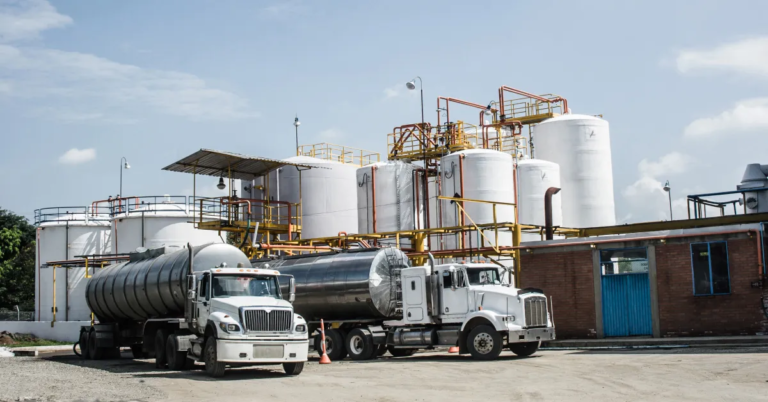Introduction
Imagine that you are an expert in oil business, cryptocurrencies and investments. Today we dive into an interesting topic: a comparative analysis of oil transportation company stocks by return and risk. Why should you be interested in oil transportation companies? Well, they play an important role in the global economy and ensure that the essential resource, oil, is delivered from producers to consumers. Let’s explore this in detail.
Overview of oil transportation companies
First, who are the major players in the oil transportation industry? Think giants like Kinder Morgan, Enbridge and TransCanada. These companies are vital cogs in the machinery of the oil industry, operating vast networks of pipelines that transport millions of barrels of oil every day. They ensure the smooth flow of oil that fuels industries, homes and vehicles around the world.
For example, Kinder Morgan operates approximately 83,000 miles of pipeline and 141 terminals. They handle about 40% of the natural gas consumed in the United States and demonstrate an important role in the market. Enbridge, another industrial titan, transports about 25% of the crude oil produced in North America and has an extensive network spanning more than 17,000 miles.
In addition, the BRUA pipeline (https://brua.ro/) is a remarkable project in Europe, strengthening energy security by connecting Bulgaria, Romania, Hungary and Austria. This pipeline is designed to diversify gas supply sources and routes and reduce dependence on a single supplier. He emphasizes the strategic importance of oil and gas transportation infrastructure at the regional level.
Productivity Key Performance Indicators
When it comes to investing, income is the top priority. Investors want to know how much return they can expect on their investment. Profitability for oil transportation companies often comes from share price appreciation and dividends. Enbridge, for example, has a strong track record of paying dividends, with a current yield of about 6.5%. Dividends are vital because they provide a steady stream of income, especially attractive in volatile market conditions.
Factors affecting productivity
A number of factors can affect the income of oil transportation companies. Economic conditions are a key player. When the economy is booming, the demand for oil increases, which increases the profits of transportation companies. Conversely, economic downturns can reduce demand for oil, which has a negative impact on revenues.
Political factors also play an important role. For example, regulatory changes or geopolitical tensions can disrupt oil supply chains and affect companies’ operations. Technological innovations, such as advances in pipeline monitoring systems, can increase productivity and reduce costs, positively impacting productivity.
Risk analysis
Investment is never without risk and oil transportation companies are no exception. Market risks are always present – fluctuations in oil prices can significantly affect these companies. For example, the sudden drop in oil prices in 2020 due to the COVID-19 pandemic led to reduced demand and lower revenues for many oil carriers.
Regulatory risks are another concern. Changes in environmental regulations could lead to increased compliance costs or even shutdowns. Operational risks such as pipeline leaks or accidents can cause significant financial and reputational damage.
Comparison of companies
How do we compare these companies? We may use several methods such as financial ratios and performance indicators. For example, Kinder Morgan and Enbridge are often compared based on their dividend yields and debt-to-equity ratios. While Kinder Morgan offers a slightly higher dividend yield, Enbridge has a stronger balance sheet with a lower debt-to-equity ratio.
Financial Performance Indicators
Let’s take a deeper look at the financials. Income is the main indicator. In 2022, Kinder Morgan reported revenue of $19.29 billion, reflecting its significant market presence. Another important indicator is net income. Enbridge, for example, demonstrated its profitability during the same year with net income of $5.76 billion.
EBITDA (Earnings Before Interest, Taxes, Depreciation and Amortization) is also vital. It gives us an idea of a company’s operational performance. For example, TransCanada’s 2022 EBITDA is $7.5 billion, indicating strong operating efficiency.
Stock Valuation
How do we value the stocks of these companies? One popular method is the price-to-earnings (P/E) ratio, which compares a company’s stock price to its earnings per share. A low P/E ratio may indicate that a stock is undervalued. As of mid-2023, Kinder Morgan’s P/E ratio was around 15, suggesting it could be a good value buy relative to its peers.
Another method is the price-to-book (P/B) ratio, which compares the market value of a company’s stock to its book value. With a P/B ratio of about 1.5, Enbridge suggests the stock is valued at 1.5 times its book value, a metric investors often use to gauge market expectations.
The result
Investing in oil transportation companies offers a variety of opportunities and risks. By understanding key performance indicators, factors affecting returns, and conducting a comprehensive risk analysis, investors can make informed decisions. Companies like Kinder Morgan, Enbridge and TransCanada present unique profiles with different returns and risks, making it important to evaluate them thoroughly.

